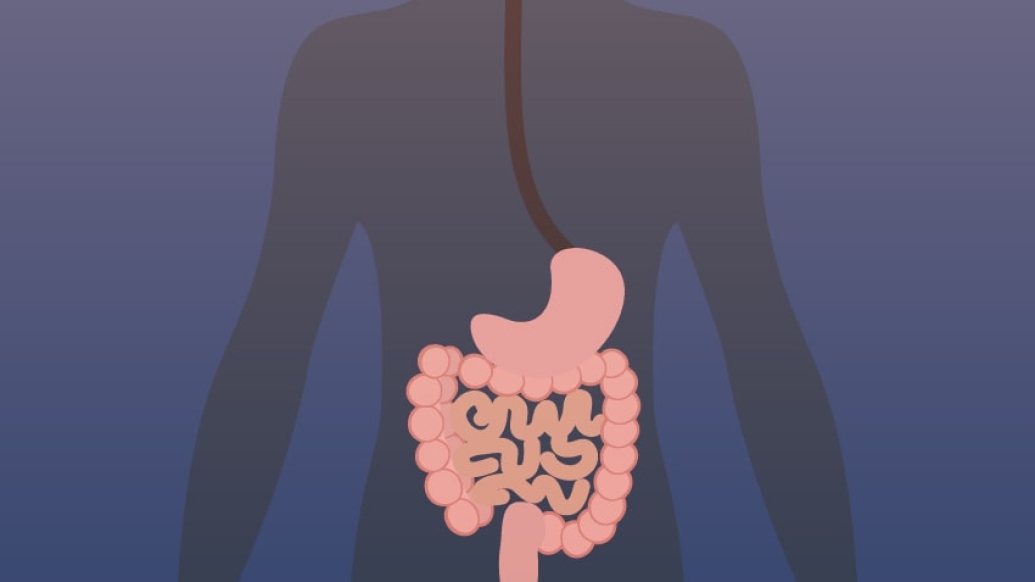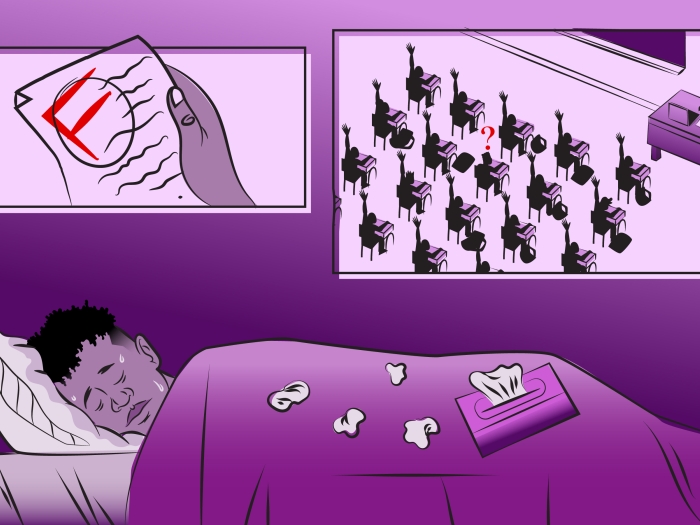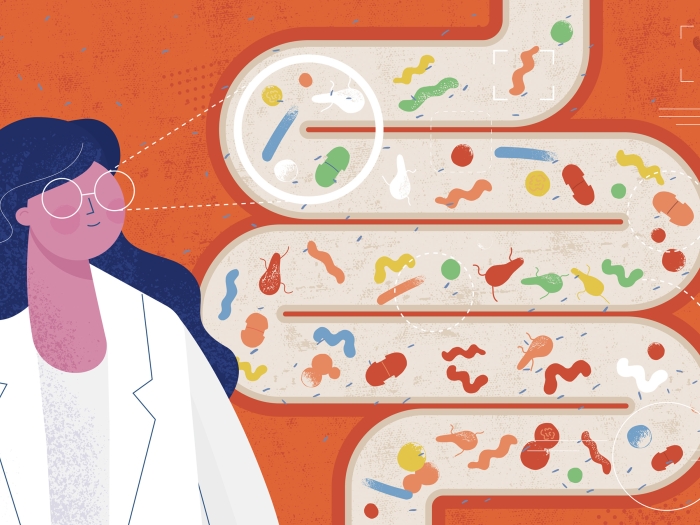The annual Digestive Disease Week conference presents research across a range of GI specialties. Here’s a look at some of 2017’s standouts.
1:30 PM
Author |

One of the year's largest medical conferences has come to a close.
Digestive Disease Week, the international scientific conference for gastroenterology, hepatology, endoscopy and gastrointestinal surgery, recently took place in Chicago. It drew more than 14,000 attendees, and over four days highlighted 5,400 original lectures, poster presentations and oral abstract presentations, and 285 exhibitors showcased the newest technological innovations.
MORE FROM MICHIGAN: Subscribe to our weekly newsletter
As these abstract presentations evolve into full published articles, Michigan Medicine highlights a few of the standouts.
Work on preventing GI bleeding
Proton-pump inhibitors (PPIs) remain the leading evidence-based therapy for the prevention and treatment of peptic ulcer disease. Despite their widespread use, one University of Michigan researcher says the medications are not always properly prescribed.
Along with colleagues, Jacob Kurlander, M.D., M.S., a gastroenterologist and health services researcher at Michigan Medicine, analyzed data on new warfarin-treated patients in a consortium of six anticoagulation clinics from 2011 to 2014. Patients on combined warfarin and antiplatelet therapy — like aspirin — were considered high risk for upper gastrointestinal bleeding and therefore should be considered for PPI treatment.
They found that nearly half of all patients referred to the anticoagulation clinics were at high risk for peptic ulcer disease; however, only one-third of them were treated appropriately with PPIs. Multivariable regression also showed that whether or not a patient was prescribed a PPI did not accurately reflect the true risk for bleeding.
"In the hospital, we often see patients who are acutely bleeding, and we know very well how to treat them," he says. "But we have more work to do to prevent these bleeds from happening in the first place."
As a specialty group, Kurlander says gastroenterologists have an important role to play in creating systems that help providers use PPIs more appropriately and educate their colleagues about the medications' best uses.
This research was done in collaboration with the Michigan Anticoagulation Quality Improvement Initiative (MAQI2), sponsored by Blue Cross Blue Shield-Blue Care Network.
Evaluating underwater colonoscopy
Water immersion for colonoscopy insertion is a technique that has been used for more than 30 years. Over the years, several studies done in Japan, Europe and the United States describe the technique and found that it appears to decrease pain during colonoscopy.
In addition to cutting down on the pain associated with the procedure, researchers from the University of California Irvine Medical Center are arguing that the technique is also associated with higher polyp detection.
"Our study builds on former studies in this area," Anish Patel, M.D., a resident physician at UC Irvine Health, told Michigan Health Lab. "It confirmed what we've been reading in previous studies and what we've seen anecdotally."
SEE ALSO: Higher Rates of Esophageal Cancer Mortality Found in Great Lakes, New England
Patel and his colleagues studied data collected from a referral center associated with UC Irvine Health. They analyzed 3,791 colonoscopies performed from September 2014 through November 2016, which indicated either the underwater (1,987) or air insufflation (1,959) technique. These two groups were compared for detection rates of all polyps, adenomas and sessile serrated polyps.
They concluded that the underwater colonoscopies were associated with higher detection rates for all types.
It's seemingly a win for patients — who can count on the underwater procedure being a little less painful and potentially more accurate. But Sameer Saini, M.D., a gastroenterologist at Michigan Medicine, where underwater colonoscopies are performed less than 10 percent of the time, isn't ready to completely abandon the more traditional method.
"Any practical, scalable approach to increase adenoma detection rates is worth looking at," says Saini. "However, 'cookbook' fixes for improving detection — minimum withdrawal time, cap-assisted colonoscopy or water immersion — are no replacement for high-quality withdrawal technique, (which is) the foundation of high-quality colonoscopy."
Reducing infant colic through diet
There could be hope on the way for parents with infants who have colic.
International researchers from the Free University of Brussels found new formula ingredients they say can reduce infantile colic and potentially improve quality of life for their parents.
The formula, consisting of "pre-digested" whey protein with reduced lactose and prebiotics and probiotics, decreased the length of unsoothable crying episodes by 85 percent, and significantly improved parents' reported overall quality of life.
"We guessed that abnormal gut microbiota in babies could be one of the multiple causes of infantile colic, and that with the mixture of prebiotics and probiotics, could help balance out the complex gut microbiome," Yvan Vandenplas, M.D., a pediatric gastroenterologist, told Michigan Health Lab. "The formula we created contained a partial hydrolysate, which helps break down proteins into smaller pieces that are easier for babies to digest."
Vandenplas is head of the department of pediatrics at the University Hospital Brussels and the associate editor of the Journal of Pediatric Gastroenterology and Nutrition. He and his colleagues tested the formula over the course of a month on 40 full-term born infants with infantile colic.
The group then compared their results to 20 full-term formula-fed infants with infantile colic who were not offered any dietary intervention. The parents completed a quality of life questionnaire, assessing the burden of infantile colic on family life.
"We found that the test formula reduced crying time by 2.7 hours — from 3.2 hours to 0.5 hours," says Vandenplas. "While the control group's crying time also decreased, the reduction was only 1.5 hours —from 3.5 hours to 2.0 hours. Parents of the infants who were fed the test formula also reported a greater improvement in quality of life scores, compared to the control group.
"While we are still completing the clinical trial process, we hope that this formula will offer frustrated parents and inconsolable babies some much needed relief — in a way that hasn't been available before," says Vandenplas.
Other intriguing research abstracts presented at the conference, Saini says, include:

Explore a variety of healthcare news & stories by visiting the Health Lab home page for more articles.

Department of Communication at Michigan Medicine
Want top health & research news weekly? Sign up for Health Lab’s newsletters today!





